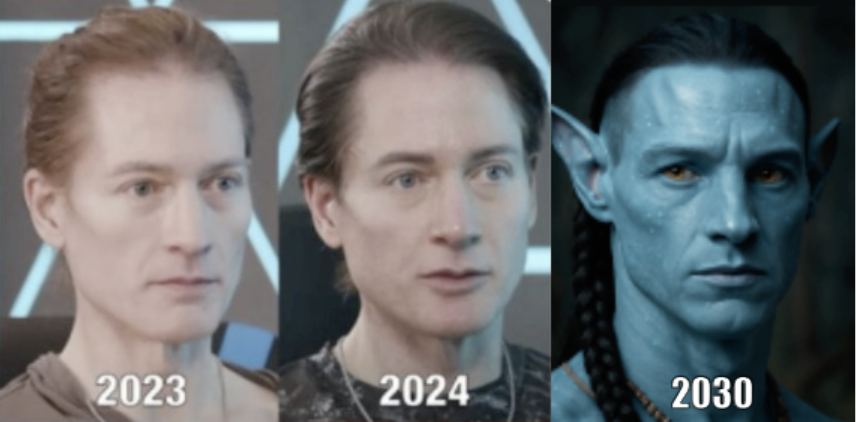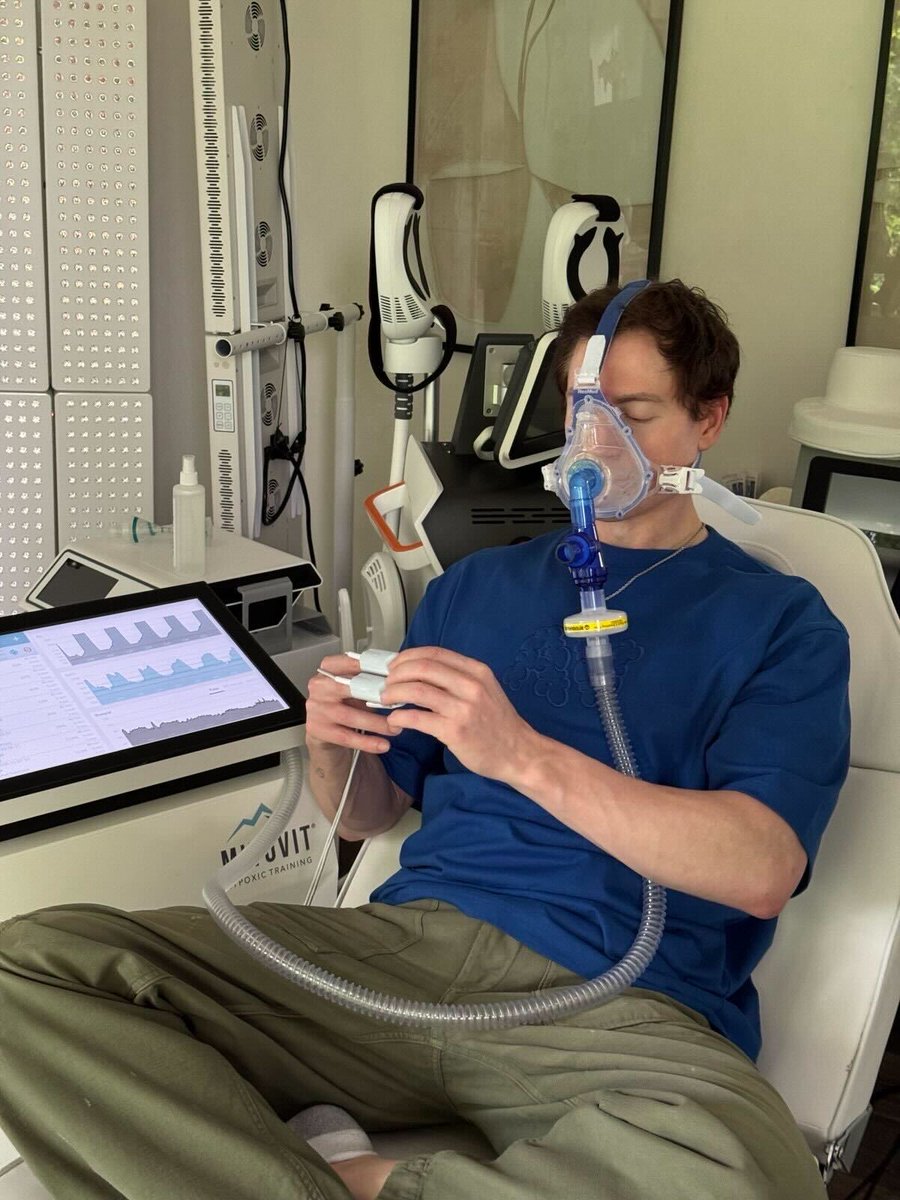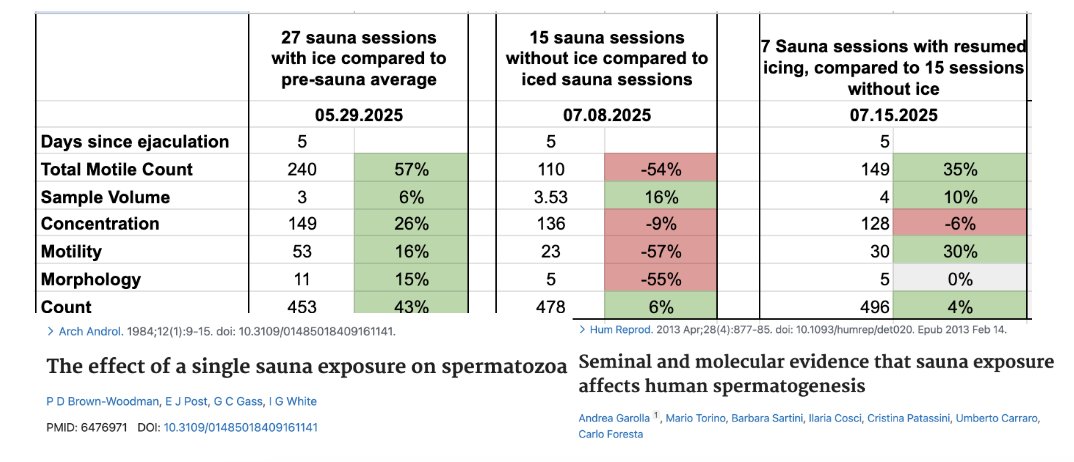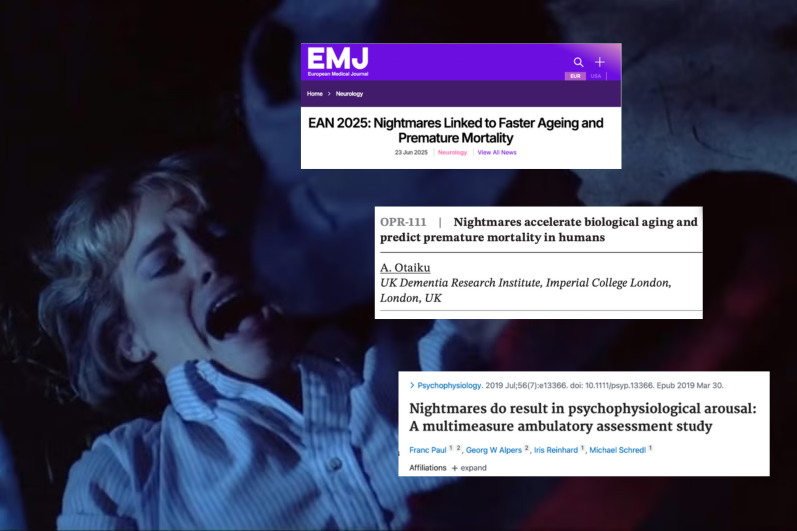Until I was 40, I kind of destroyed my skin.
Sunburns, poor diet, no skincare routine...
Now I'm paying the price.
Here's what I'm doing now and what I wish I'd known earlier in life... 🧵
Sunburns, poor diet, no skincare routine...
Now I'm paying the price.
Here's what I'm doing now and what I wish I'd known earlier in life... 🧵

When I started Blueprint, my skin was in the 98th percentile for damage on some markers, with an average skin age of 64.
Now, my skin age has improved to between 37 and 42.
The image below, using multispectral imaging, shows my accumulated UV damage from excessive sun exposure.
Now, my skin age has improved to between 37 and 42.
The image below, using multispectral imaging, shows my accumulated UV damage from excessive sun exposure.

Here are a few basics to maintain healthy skin:
+ Exercise.
+ Prioritize your sleep.
+ Eat a healthy, Blueprint-like diet.
+ Consider getting sun earlier in the day and later in the evenings when the UV index is lower.
+ Avoid junk/fried/highly processed foods, cigarettes and vaping
+ The sun is good for you but not too much and not too little. Just the right amount will do.
+ If you’re getting direct sun exposure when the UV index is high (10 am - 4 pm), you can protect your skin with options such as clothing, a UV umbrella, a hat and or mineral sunscreen.
+ Exercise.
+ Prioritize your sleep.
+ Eat a healthy, Blueprint-like diet.
+ Consider getting sun earlier in the day and later in the evenings when the UV index is lower.
+ Avoid junk/fried/highly processed foods, cigarettes and vaping
+ The sun is good for you but not too much and not too little. Just the right amount will do.
+ If you’re getting direct sun exposure when the UV index is high (10 am - 4 pm), you can protect your skin with options such as clothing, a UV umbrella, a hat and or mineral sunscreen.
My daily protocol:
Face wash morning & night.
+ Sunscreen (mineral)
+ Moisturize (Body and Face)
+ Creams - can start with the basics such as niacinamide (morning and night), vitamin C (morning), hyaluronic acid (as desired), and tretinoin (at night, an Rx).
Face wash morning & night.
+ Sunscreen (mineral)
+ Moisturize (Body and Face)
+ Creams - can start with the basics such as niacinamide (morning and night), vitamin C (morning), hyaluronic acid (as desired), and tretinoin (at night, an Rx).
Spot endocrine disruptors in skin care products:
Endocrine disruptors are natural or man-made chemicals that may mimic or interfere with the body’s hormones, known as the endocrine system. These chemicals are linked with many health problems in both wildlife and humans.
Use these apps to see how your products score:

Endocrine disruptors are natural or man-made chemicals that may mimic or interfere with the body’s hormones, known as the endocrine system. These chemicals are linked with many health problems in both wildlife and humans.
Use these apps to see how your products score:


Next, here are some supplements to support skin health:
+ Collagen (20-30g daily) Pair with Vitamin C (to boost collagen synthesis) (Blueprint collagen available in December 2024)
+ Niacinamide (15 mg in Blueprint Essential Capsules)
+ Hyaluronic acid (120 mg in Blueprint Longevity Mix)
Check out our Blueprint Essential Capsules and Blueprint Longevity Mix here:
+ Collagen (20-30g daily) Pair with Vitamin C (to boost collagen synthesis) (Blueprint collagen available in December 2024)
+ Niacinamide (15 mg in Blueprint Essential Capsules)
+ Hyaluronic acid (120 mg in Blueprint Longevity Mix)
Check out our Blueprint Essential Capsules and Blueprint Longevity Mix here:

Here are some pro tips:
+ UV-tinted windows to block 99% of damaging UV rays
+ A UV umbrella during high UV index times
+ Microdosing Accutane (40mg weekly) for blemish-free skin. Alternatives include over-the-counter retinols.
+ Red light therapy 3x per week
Note, if you don’t have easy access to red light therapy, don’t worry. The basics are a great place to start.
+ UV-tinted windows to block 99% of damaging UV rays
+ A UV umbrella during high UV index times
+ Microdosing Accutane (40mg weekly) for blemish-free skin. Alternatives include over-the-counter retinols.
+ Red light therapy 3x per week
Note, if you don’t have easy access to red light therapy, don’t worry. The basics are a great place to start.
To track my progress, we routinely measure the biological age of my skin using multispectral imaging (in the U.S.,aka Visia).
It provides detailed views of skin health including:
+ UV damage
+ Pore size
+ Dark spots
+ And many other indicators.
Some wellness clinics offer this service. You can search locally to find one.
It provides detailed views of skin health including:
+ UV damage
+ Pore size
+ Dark spots
+ And many other indicators.
Some wellness clinics offer this service. You can search locally to find one.
Finally, here are a few advanced therapies I've been experimenting with to target collagen production, skin firmness, and overall skin health:
+ Tixel for improved collagen and elastin.
+ Sofwave for improved collagen and elastin.
+ Sculptra to boost natural collagen production (injected in the face)
+ Tixel for improved collagen and elastin.
+ Sofwave for improved collagen and elastin.
+ Sculptra to boost natural collagen production (injected in the face)

If you want to learn more about the science of skin aging, how to optimize your skincare routine, and stay up to date on what we learn through trial and error, here's where I keep all of it updated:
blueprint.bryanjohnson.com/pages/blueprin…
blueprint.bryanjohnson.com/pages/blueprin…
• • •
Missing some Tweet in this thread? You can try to
force a refresh











